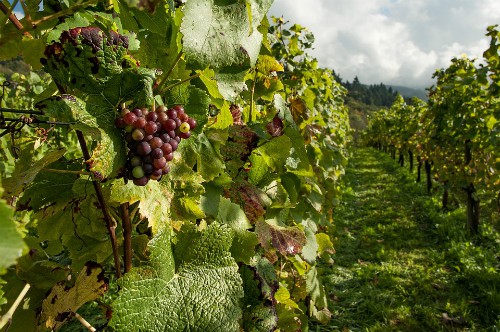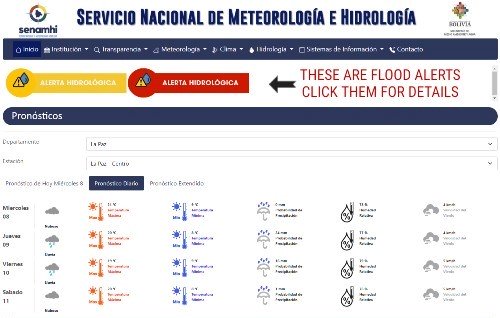|
The Weather in Tarija Bolivia The weather in Tarija Bolivia is often compared to that of the Mediterranean. Tarija is the Southeastern-most department of Bolivia and borders both Argentina and Brazil. Many believe Tarija has the most pleasant climate in Bolivia. At 1924 meters above sea level, it's capital city (also called Tarija) is known for its pretty gardens.
The climate in this region is prime for wine-making. Tarija is famous for its vast vineyards and award-winning wines, many of which are produced at some of the world's highest elevations for wine. But perhaps the best-known product of Tarija is Singani, an eau-de-vie distilled from wine that is not produced anywhere else in the world. One of the nicest times of year to visit is Easter Week (Semana Santa) when the city of Tarija and nearby towns are adorned in millions of flowers. Temperatures average 77ºF (25ºC) during the summer months (December to March, also the rainy season) and dip to 55ºF (13ºC) during the winter (June to August, also the dry season); however you should prepare for cold evenings. Throughout the remainder of the year the weather is pleasant, with warm days and cool nights. The widget below provides a 7-day Tarija Bolivia weather forecast.
 The weather in Tarija Bolivia does vary by location. Although it is the second smallest of Bolivia’s nine departments, it is divided into four distinct geographical and climatological regions which you should read more about if you plan to travel outside of the city. While the average elevation is 4026 feet above sea level, Tarija’s topography actually ranges greatly from its lowest point of just 673 feet above sea level, to its highest mountain peak which is 16,755 above sea level. The city of Tarija itself is situated at 6122 feet above sea level. Its Singani and wines are all made from grapes grown 4921-9186 feet above sea level. Tarija offers a series of day-long "wine tours" during which visitors are taken by bus to visit several of the vineyards in the region, see how the grapes are grown and processed, learn about the history and future of wines in the region, and sample them.
No matter where you go in Tarija, you will find that tarijeños are generally warm and welcoming. They are, in fact, considered to be some of the friendliest people in the nation, and are well-known for their laid back nature, frequent smiles and sweet disposition, which is reflected in their music. Tarija has some of the happiest sounding music in Bolivia. La Rueda Chapaca is one of the most traditional dances of the region, in which dancers dance as a group. The Chacarera, which is also a typical dance in Argentina, is danced in pairs and is greatly enjoyed by tourists as they marvel at the fast clapping, spinning and complex footwork. The generally temperate weather in Tarija Bolivia is also conducive to spending a lot of time outdoors and you’ll find the plazas, markets and sidewalks of the city quite busy during lunch, dinner and tea time as people enjoy many of their meals outdoors. It's not uncommon for tarijeños to enjoy a fruit milkshake from a sidewalk vendor after school, an empanada in one of the plazas on the way to work, or a full lunch at the central market. You’ll surely want to join them. The following are some well-recommended restaurants in Tarija. While there is much to love about Tarija today, one of the most interesting things about this region is its pre-human era. Apparently, the area now known as Tarija was also very much loved by dinosaurs and other creatures millions of years ago, and more recently, numerous ancient human tribes. Some of the largest dinosaurs ever known inhabited this region, spreading down through Argentina, and the prehistoric fossil record is so abundant that the Tarija paleontology museum (which is also home to an archeology museum and minerology collection on the second floor) is only able to show the public a tiny percentage of the fossils it has collected. Most of its fossils and other prehistoric era artifacts are actually in storage as the people of Tarija find so many, so frequently, that the museum cannot possibly clean and process all of them and does not have enough showroom either. It’s a small but fascinating museum. Do not miss it! You can also visit the website of the Bolivian National Meteorology and Hydrology Service SENAMHI for real time local weather conditions and forecasts in dozens of Bolivian cities plus real time flood alerts.
Now that you know more about the best places to see, things to do and times of the year to visit Tarija, make sure you know what to pack.  |

